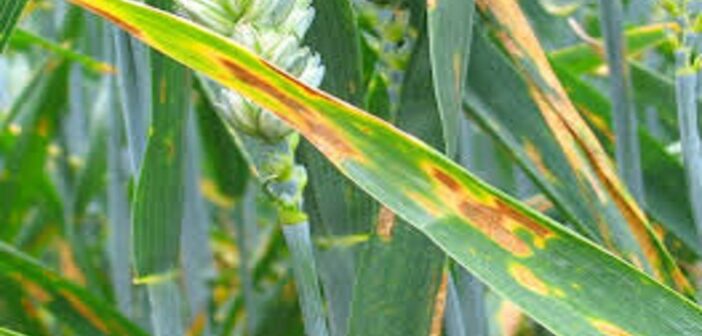Following what most experts considered to be a very bad septoria year in 2022/2023, Andrew Bourne of seed merchant T Denne and Sons, suggests the last two seasons have been a good illustration of the need for UK growers to spread their risk by selecting varieties with different parentage.
Andrew says” In my opinion, this season has been the worst for disease pressure in the South East since 2012. However, when you analyse the certified seed sales for last Autumn – on the back of a bad septoria year in 2023 – 47% of the total winter wheat seed sold was still covered by just 3 varieties. So, we’ve got a lot of growers, with too many eggs in too fewer baskets, not looking at genetic diversity to spread their risk.”
He has been recommending the variety Mayflower for 3 years now. Although it is not the highest yielding milling wheat, its disease credentials, including an 8.9 for Septoria tritici and a 9 for yellow rust, have been unfairly overlooked. “In high-pressure disease situations, when yields can easily be compromised, varieties such as Mayflower should be a strong choice for growers. Its French parentage is radically different to other milling wheats on the Recommended List and with its flexibility on input timings, it’s a lower risk variety for growers,” he says.
West Kent farmer Will Thompson, of the Brattle Farm Partnership agrees with Andrew’s analysis on the need for growers to widen their varietal choice for better risk management.
”We first spotted Mayflower in trials in 2022 a few months before it went onto the RL. We liked its early drilling flexibility, it looked very clean – supported by some impressive disease resistance scores and had a relatively good specific weight.
“In the last week of September that year we drilled 130ha of the crop, as a first wheat, into our predominantly heavy clay soil and it established well, showing decent early vigour. Despite its robust profile, we took a belt and braces approach on inputs and were rewarded with a crop that remained noticeably cleaner through a high pressure Septoria season than all our other key wheats.
“The final yield for Mayflower last Autumn was just under 10t/ha, not noticeably different to what we would normally expect to achieve with the milling variety Skyfall. However, its grain quality was exceptional, with a protein content of 13.1% and a Hagberg of 420 – one of the highest Hagberg falling numbers we’ve ever achieved.
“On the back of that experience, we increased our area of Mayflower to 160ha last Autumn and, despite the very wet establishment conditions, the crop came through well with its stronger disease profile proving an asset on what has been a difficult ‘stop-start’ spring with delays on key spray timings. Once again, it’s been our cleanest crop this season and looks set to perform well at harvest” he concludes.
Zantra agronomist Stan Harrison has been working with Will and his team for five years now. He also supports the argument for better risk management in varietal choice and has monitored Mayflower’s progress closely over the last 2 seasons.
Stan says” Having walked the crop regularly I can confirm it has been the stand-out variety in terms of both green leaf retention and its ability to stay clean. This Spring, in particular, was very tough with wet and windy conditions making it almost impossible to spray when we wanted. Mayflower’s disease resistance credentials and its flexibility on input timings have really come to the fore. It’s a very forgiving variety.
Following excellent first year performance in 2022/23 we didn’t feel under any pressure to go with top end chemistry this year, relying mainly on a basic four-spray fungicide programme applied at 3 weekly intervals. The only exception being the use of Apaveq + Splendid (fenpicoxamid + prothioconazole + tebuconazole) for our main flag leaf spray applied on May 30th.
“After applying the T3 spray on June 19th I walked the Mayflower again and, despite what had been a very challenging season so far the upper canopy was still clean compared to Will’s other winter wheat crops.
“If high pressure disease and extreme weather conditions were to persist in the future and become the ‘new normal’ then I believe growers should look more pro-actively at mitigating their risk on the varieties they choose. Particularly with the use of proven, disease resistant, robust types that could buy them a few days if difficult weather conditions prevent or delay a spray,” concludes Stan.




